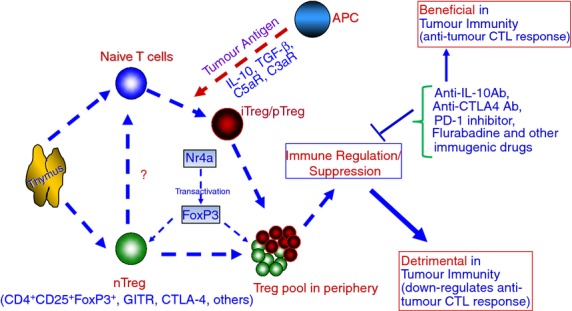Figure 1.

A general schema displaying the derivation of regulatory T (Treg) cells from the thymus and periphery and their roles in inhibiting the anti-tumour response. The roles of Treg cells differ in that natural Treg cells (tTreg) are derived from the thymus, activated by antigen-presenting cells (APC), and modulated by various cellular regulatory molecules (CTLA-4, FoxP3 and GITR), while induced Treg cells are derived in the periphery (pTreg), activated by APC in addition to co-stimulation, and maintained by interleukin-10 (IL-10) and transforming growth factor-β (TFG-β). Both categories of Treg cells inhibit the anti-tumour cytotoxic T lymphocyte (CTL) response and/or expansion. Hence the molecular targeted therapies that inhibit Treg cells (natural or induced to be termed as tTreg or pTreg and not nTreg or iTreg) and enhance CTL-mediated anti-tumour response are important. ? = It is not known how, nTreg/tTreg influence naive CD4 cells to become iTreg/pTreg.
